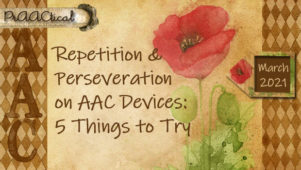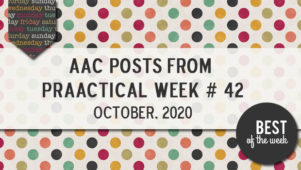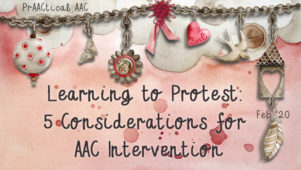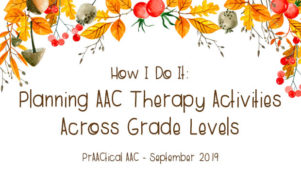AAC Core Vocabulary Instruction: Indirect Teaching Strategies

It has been so exciting to see that AAC learners are increasingly provided with communication boards, books, SGDs, and apps that feature a robust set of core vocabulary words. For many years, ‘providing AAC’ used to mean access to topic and choice boards or activity-specific communication displays (ABCDs). Now, we recognize the limitations of those approaches and do our best to move beyond them in favor of more linguistically robust options. AAC systems with core vocabulary that is organized to support the development of a motor plan allows learners to build and grow their skills over time.
For a long time, the AAC field has known that providing access to appropriate tools (in this case, a core vocabulary set) is only the first step toward successful use of augmentative communication. Providing it is necessary but not sufficient for most AAC learners to develop any sort of linguistic competence. For them to be able to use their AAC tools to express themselves, we need to use both direct and indirect methods of instruction. In this post, we review some of the indirect teaching strategies used by clinicians, educators, and families to support AAC learners. (Stay tuned for future posts when we review more direct methods for AAC instruction.)
Indirect Methods of Teaching AAC
- Focused Language Stimulation: Simply put, this strategy uses auditory bombardment to highlight whatever language elements we want to teach. In this case, we’re applying it to selected core vocabulary..
- Aided Language Input: Perhaps the most critical strategy for us to use with beginning communicators, this involves having communication partners actually use the AAC system (or a no tech version of it) when they speak to the learner. Why is this so critical? Because immersion in a language sets the foundation for learning the language of AAC. How well would any of us learn a new language if we weren’t in an environment where people actually spoke that language? For someone to learn AAC, they need to be in an environment where they see and hear it all day long. Want more information on the rationale, evidence base, or implementation? This post links to informational articles and videos.
- Descriptive Talking and Teaching: This is a strategy in which partner comments and questions are designed to elicit high-frequency vocabulary and multi-word responses. For example, in the context of a sink/float activity we might show one of the items to be tested and ask ‘What will it do?’ to elicit phrases like ‘It (will) go up/down.’
- Planned Communication Opportunities: AAC learners need more practice than they will get from random opportunities that they experience throughout the day. To maximize learning, we plan out many of those opportunities in our therapy sessions and the classroom day.
Are there other indirect teaching strategies that have worked for your AAC learners? We’d love to hear about them.
Filed under: Featured Posts, PrAACtical Thinking
Tagged With: AAC intervention, implementation, language therapy
This post was written by Carole Zangari





1 Comment
Wonderful!